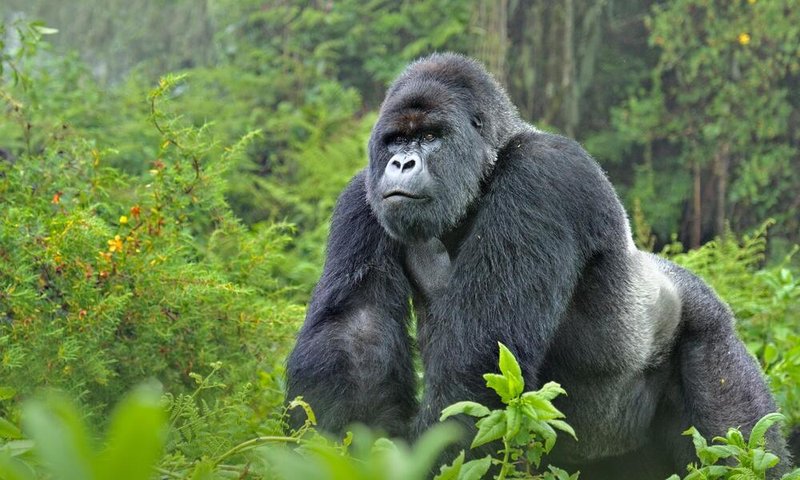
Imagine walking through a lush, green forest, filled with the sounds of chirping birds and rustling leaves. Suddenly, you spot a family of gorillas lounging in the trees, grooming each other and enjoying life. It’s a beautiful scene, but one that may soon become a rare sight if conservation efforts don’t ramp up. There are two main species of gorillas, the Eastern and Western gorillas, both of which are facing serious threats. In this article, we’ll take a closer look at their status, the various threats they face, and what we can do to help.
The Current Status of Gorilla Populations
Gorillas are classified into two main species: the Eastern gorilla and the Western gorilla. Both species have several subspecies, and unfortunately, all of them are considered endangered. The *IUCN Red List*, a comprehensive resource that assesses the conservation status of different species, lists the Eastern gorilla as critically endangered and the Western gorilla as endangered.
The numbers tell a sobering story. Recent estimates indicate that there are fewer than 5,000 mountain gorillas left in the wild, while the population of the Western lowland gorilla is thought to be around 100,000. Habitat loss, poaching, and disease are primary drivers behind these declines. Imagine losing a large part of your home, followed by threats from hunters and illness. That’s the reality for these incredible animals.
Subspecies Breakdown
– Eastern Gorilla: This includes the mountain gorilla and the eastern lowland gorilla, both of which have seen dramatic population declines due to poaching and loss of habitat.
– Western Gorilla: This category encompasses the Western lowland gorilla and the Cross River gorilla, both also facing severe threats, but with slightly different causes.
Understanding these details helps illustrate the nuances of the challenges gorillas face and highlights why conservation efforts must be species-specific and tailored to each subspecies’ unique conditions.
Major Threats to Gorilla Survival
So, what exactly is threatening gorillas? Here’s the thing: they face a cocktail of challenges that have compounded over the years, making survival tough.
One of the biggest threats is deforestation. As forests are cleared for agriculture, logging, or urban development, gorillas lose their natural habitat. Imagine having your home torn down to make way for a new mall. That’s what’s happening to gorillas as their forests are hacked away.
Another significant danger comes from poaching. Gorillas are hunted for their meat, and babies are often captured to be sold as pets. It’s a grim reality that’s difficult to digest. Then there’s the risk of disease, particularly from viruses like Ebola, which can decimate entire gorilla populations. It’s heartbreaking to think that these beautiful creatures are at risk not just from human actions but also from conditions beyond their control.
The Role of Conservation Efforts
Fortunately, hope is not lost. Conservation groups around the world are working tirelessly to protect gorillas and their habitats. Organizations like the Wilderness Conservation Society and WWF are leading efforts to create protected areas where gorillas can thrive away from human interference. Think of it as a safe haven, a sanctuary where gorillas can live without fear of losing their homes or lives.
Additionally, education and community involvement are essential. Many programs aim to educate local communities about the importance of gorillas and their role in the ecosystem. By fostering a connection between the locals and gorillas, conservationists hope to inspire collective efforts to protect these animals. After all, when communities see the value in protecting gorillas—both ecologically and economically—they’re more likely to take action.
Innovative Conservation Methods
– Anti-Poaching Patrols: Many organizations have implemented ranger patrols in gorilla habitats to deter poachers and monitor wildlife.
– Community-Based Conservation: Engaging local populations in conservation initiatives can lead to more sustainable practices.
– Eco-Tourism: Responsible tourism can provide financial incentives for local communities to conserve gorillas and their habitats.
These methods illustrate that conservation isn’t just a one-size-fits-all solution. It requires a thoughtful, multi-faceted approach to ensure the survival of these magnificent creatures.
How You Can Contribute
Feeling inspired? You don’t need to be a wildlife expert to make a difference! There are several ways anyone can contribute to gorilla conservation.
1. Support Conservation Organizations: Donating to groups focused on gorilla conservation can help fund their important work.
2. Spread Awareness: Share information with friends and family. The more people know, the greater the likelihood that they will get involved.
3. Sustainable Choices: When shopping, opt for products that are sustainably sourced. Supporting eco-friendly brands can help reduce habitat destruction.
Every small action counts. Just like a single drop of water creates ripples in a pond, your contributions can inspire change in communities and organizations working to protect gorillas.
The Future of Gorillas
So, what does the future hold for gorillas? Honestly, it’s a mixed bag. With ongoing conservation efforts and growing global awareness of environmental issues, there’s reason for hope. However, the battle is far from over.
As climate change accelerates, gorillas will continue to face threats from shifting climates, which can impact their habitat. The good news is that scientists, conservationists, and everyday people are coming together to tackle these challenges. It’s a collective movement toward a more sustainable future, one where gorillas can roam their forests freely, just like they’ve done for thousands of years.
The plight of the gorilla isn’t just a conservation issue; it’s a reflection of our relationship with the natural world. As we learn more about the threats they face and the efforts to protect them, it becomes clear that we all have a stake in their survival. By supporting conservation initiatives and raising awareness, we can help ensure that these incredible animals have a future. Together, let’s be advocates for the gorillas, champions of the forests, and protectors of the planet. After all, a world with gorillas is a world worth fighting for.

